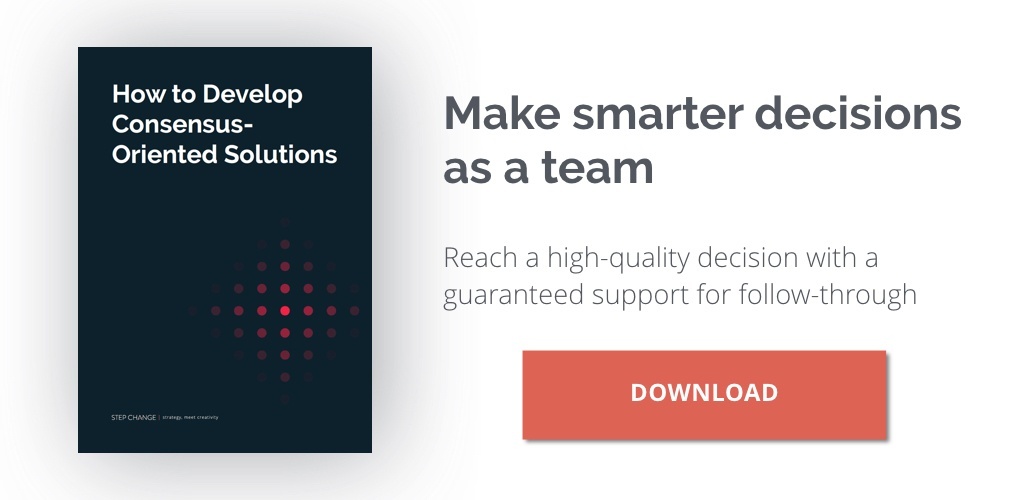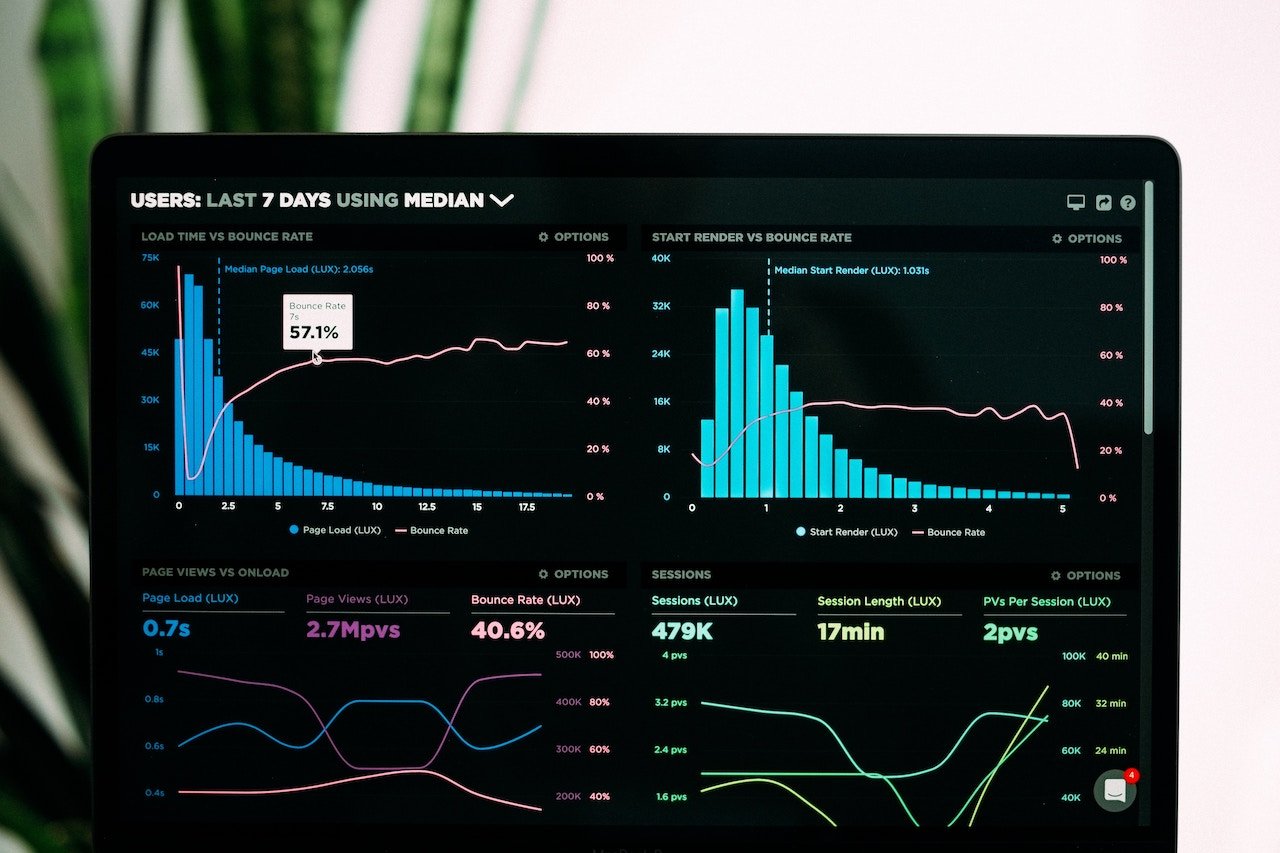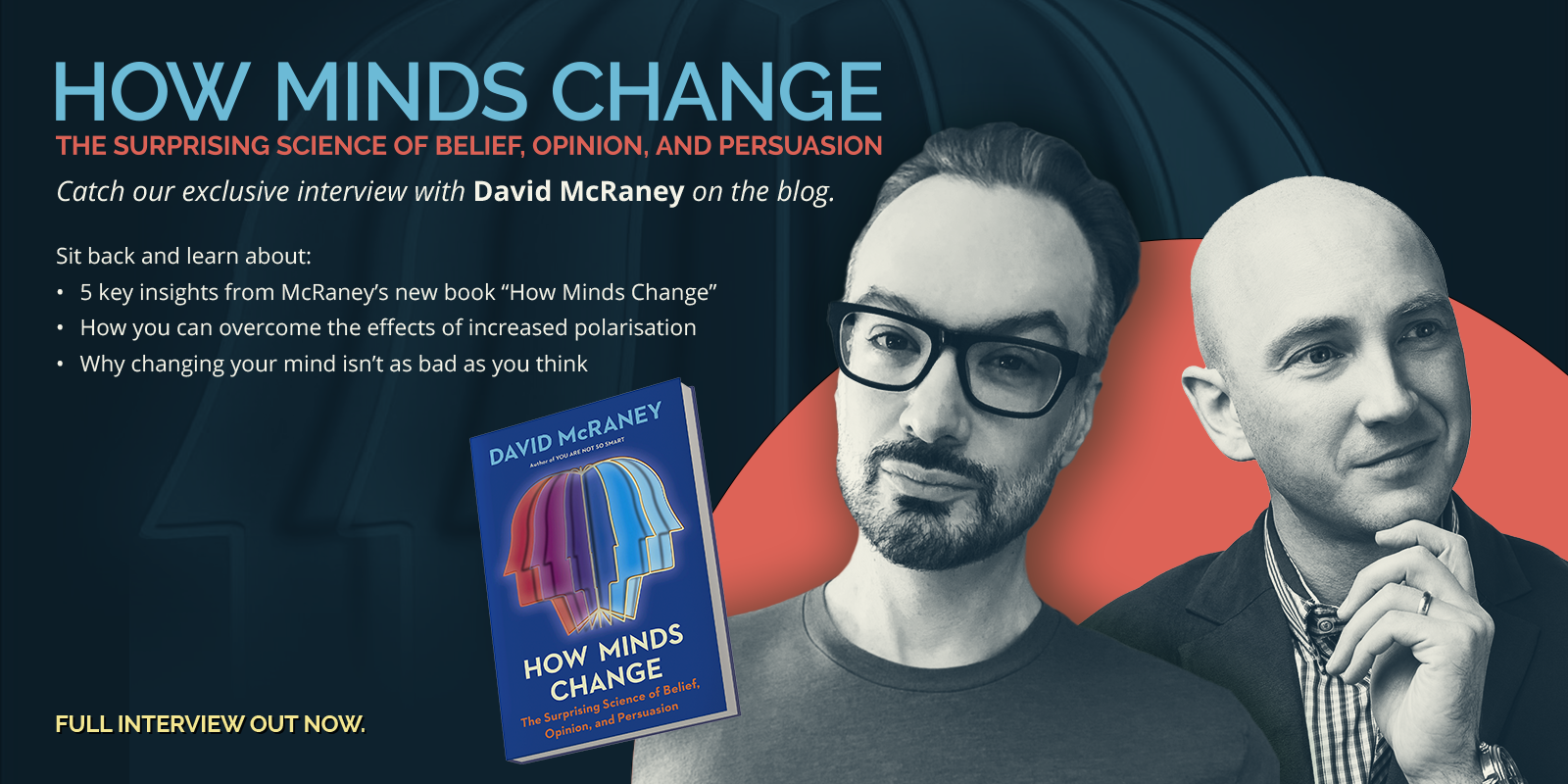Companies do not come to faster decisions by osmosis — it is always the result of a better decision-making framework. In agile organisations, the ability to make nimble decisions lead to 2.5x the growth, twice the profit, and a 30% higher ROI on investments.
How can you unlock your ability to make better, smarter decisions?
When it comes to strategy, creating a polarized choice is sometimes helpful. Because you will fill in the details around a general plan, your pathways can be mutually exclusive. From here, you can not only make a decision more easily, but you can make it faster as well.
Below is an effective framework for strategic decision-making and tools that you can use to ensure you get decision-making right.
Framework for Strategic Decision-Making

1. Generate Alternatives
In order to make the best strategic decision, you need to have definitive strategies to choose from.
If all your options are similar without any major differences, your vision may become skewed rather than focused. You may have trouble directing the operations of each department if they do not have a clear path notated from you.
Generating alternatives that are as different as possible from each other is a great way to begin organising your company vision into day-to-day activities. If you polarise your options, you can see where they will lead. Looking into the future gives you the blueprint to avoid the potholes today.
2. Identify Barriers to Each Option
You may come up with multiple solutions that have good endings. If so, how do you decide between them?
The key here is to choose the option that is easier to get to. All else being equal, would you rather grab the gold at the end of the rainbow or grab the gold at the end of a gauntlet?
The barriers between you and your goal may actually decide your path for you. If you do not have the resources to get over a certain hurdle, then you narrow down your pathways to the one that you can actually achieve.
3. Design Tests to Quantify Conditions
Just because you come up with solutions and scenarios in your head does not mean that is how things will go. There are many conditions to consider on your strategic path that may change the path.
Testing to prove or disprove the conditions on a specific path helps determine the viability of that path. You may think that A leads to B leads to C, but this may not be the case once you quantify the path through case studies, precedent, and experimentation.
4. Make the Decision
Your decision must be data-driven in this day in age. There is far too much data to “go from the gut.” Do not skip steps — make the decision on which path to take only after an appropriate number of tests.
The process may be slow, but the results are worth it. You only get one chance at some decisions.
Once you have decided on a particular path, commit fully to it. After devising, consulting, and testing, now is not the time to move halfway. You have already vetted the decision, and bringing it to fruition probably depends on how much you believe in the data you have found and the path you have chosen.
Tools for Smart and Strategic Decision-Making

Logic Tree
If you have trouble mapping out the pathway of multiple solutions, the logic tree can simplify probable courses and outcomes. We live in a visual world, and seeing your strategy mapped out as a bona fide logic tree can help immensely with your decision-making process.
Logic tree works well if you are initiating a brand expansion with old sales data, when you are creating buyer profiles from demographics or deciding which pressing business issue you need to tackle when all of them have priority.
Decision Matrix
If you have many choices with options that you have yet to prioritise, the decision matrix may be able to help. The decision matrix helps teams choose without tension.
This program/process works best if you need to think through a strategic decision with many moving parts. Filling an important executive position is such a process. You will be able to come to a much more logical decision, putting emotion to the side.
The decision matrix also works well if you have many decision makers weighing in on the course of action. You get rid of office politics and rank pulling once you put a dispassionate system of logic in place.
Everyone answers to the system, eliminating bad strategic decisions that are based on someone's ego.
OODA Loop
The OODA loop tool is made for iterative processes that must be done over and over. You may need to tweak a certain model with upgrades in every cycle. You may have to speed up the cycle itself without losing out on quality. For looped procedures, this is the decision-making tool for you.
OODA allows you to easily collect initial information and tweak that information as new data comes into view.
You can fine-tune each and every step in your process over and over, creating a system of continuous improvement for your company.
The strategic decision, in this case, is how to advance using new information that is consistently flowing into your decision matrix.
Ladder of Inference
If you need to make a decision that requires a lot of inference, the ladder of inference is your go-to tool. The ladder helps users gain awareness of how certain facts eventually become conclusions.
The process you go through reduces the number of wrongful assumptions that you make when quantifying and justifying those facts.
Although the ladder of inference starts with hard data, its true value comes in helping businesses shape a reality from that data. You will be able to see just how many realities that you can create from a single set of data and the assumptions, beliefs, and actions that lead to a certain conclusion. In short, this tool gives you a lot of power.
Strategic Radar
The strategic radar is an upgrade to the SWOT tool, which gives you a vetted fixed process for making strategic decisions. A major advantage of the radar is that you always know what you are getting into.
From eight essential questions to 29 disruption factors, the strategic radar helps your learn about your needs and your context very quickly. You get a visually powerful rendition of your opportunities and challenges and also gives context for those situations.
Unlike the SWOT, the strategic radar provides for the crucial element of time. Opportunities, after all, are time-sensitive things. You also begin to understand just how long your decisions will take to bear fruit. You can better respond and adapt to future changes when you have an estimate of when those changes will occur.
The strategic radar also forces business leaders to prioritise. Because you can only hold so many strategies in your head at once, you are forced to pick the ones that are likely best for your company before doing a deep dive into them.
The four quadrants of the model separate market forces, internal and external opportunities, and the limitations that your company may have that would hinder a great outcome.
What sets great decision-makers apart from the average ones is that they believe in strategic decisions and concrete action. Consider the tools above as your key to unlock the power of a well-oiled, fast-moving strategic machine.















